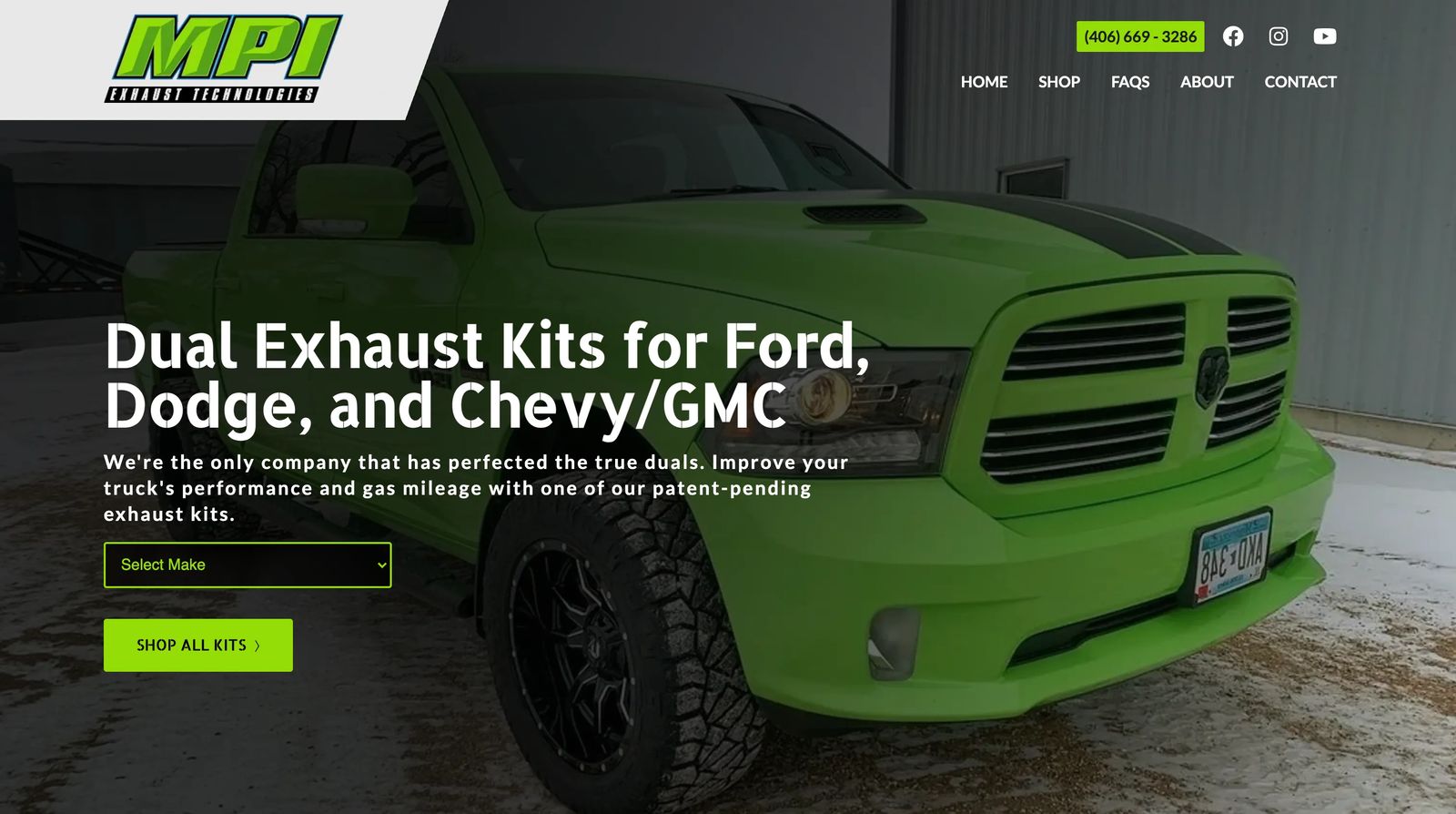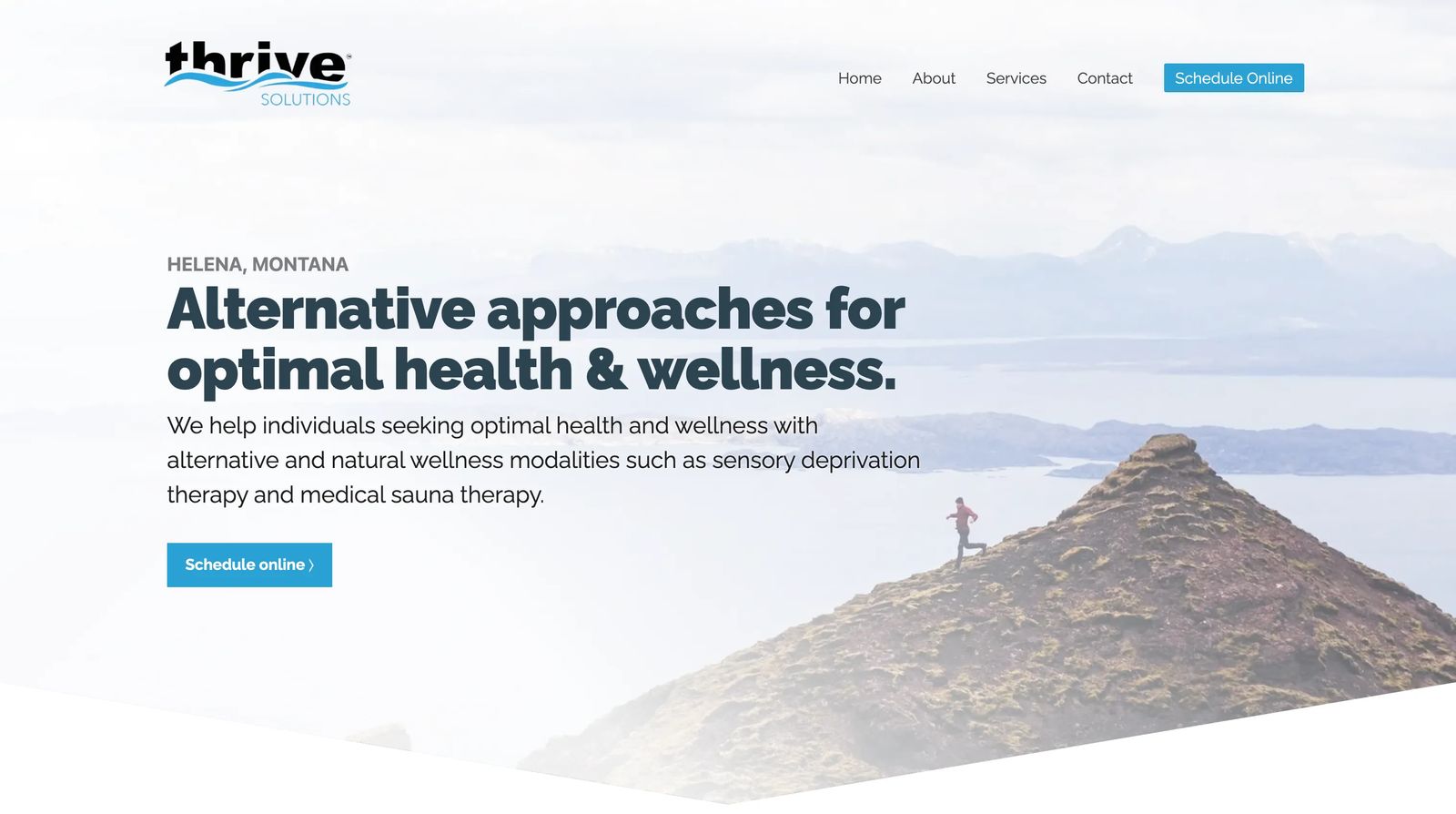
What is a call to action? How to create one for your website.
Jessica Baldwin / Updated June 30, 2023
Your website visitors should know exactly what to do when they're ready to engage with your brand.
Defining a clear and compelling call to action (CTA) is vital for driving conversions on your website.
By aligning your website's design, user experience, and content with an effective CTA, you can guide visitors toward the desired action, whether it's making a purchase or signing up for your services.
What is a call to action?
A call to action is a word or short statement that tells your visitors what to do when they land on your website. It is usually accompanied by marketing copy that explains the benefits of the product, service, or resource. The call to action phrase may also appear on a clickable button or within another design element.
An effective website relies on a compelling call to action (CTA) that drives interest and engagement. As your website traffic expands, optimizing your conversion rate becomes imperative in leveraging the user attention you've attracted. By effectively capturing qualified leads and driving sales through a well-crafted CTA, you can maximize the potential of your website's success.
Calls to action on your website
Your primary call to action should help your website visitor take action to become your customer or client. The primary CTA should be prominent on your homepage and other highly visible sections of your website.
However, your website may have other calls to action to support your marketing strategies. For example, a blog post may have a CTA that encourages readers to subscribe to your newsletter.
Here are a few different types of CTAs:
Subscribe
"Subscribe" may be used as a call to action to encourage website visitors to subscribe to a podcast or newsletter or begin monthly payments for access to a product, informational program, or service.
Book a demo
For some products, like software, a product demonstration is a key component of a company's sales funnel. Often, businesses find it advantageous to optimize for scheduled demos with potential leads as the primary goal.
Book a consultation
Many service-based organizations need to gather information from their potential clients to customize a service plan to their needs. In this case, the primary action is to book a consultation.
Schedule an appointment
Service companies like health clinics, repair shops, salons, accountants, and others often operate on booked appointments. Therefore, they optimize their CTA for this conversion event.
Make a reservation
Hotels, restaurants, and hospitality businesses optimize for booked reservations.
Shop now
E-commerce sites may use the "shop now" call to action to move website visitors to the products section of their website or to a specific product's detail page.
Add to cart
On an e-commerce website, the business wants its website visitors to add items to the shopping cart and then checkout and pay. Before someone can checkout, however, they have to optimize for the "add to cart" action.
Checkout
Once items are in a cart, an e-commerce website must guide the shopper to checkout.
Request a quote
Many businesses' first step in working with a client is to provide a proposal or custom quote. To do so, they need to gather initial information from their prospects. Their websites often feature a "request a quote" CTA accompanied by a form where the prospect can enter their details.
Sign up
"Sign up" can be used for many different purposes. Businesses may direct website visitors to sign up for an account, an e-newsletter, a course, an event, and more.
Call or text
Many businesses prefer to talk to their potential customers via phone or text. Often, their team can better close the sale by optimizing for this CTA.
Get the free download
A free resource can be a great way to grow an email list of qualified prospects. Many businesses use a download link that directs visitors to a PDF or video file.
Save 20%! Enter your email
Many e-commerce websites will offer a discount in exchange for an email address. They know that email marketing is an effective way to stay in front of their prospects affordably.
Join
Memberships and subscriptions are a growing business model for content creators and experts sharing their knowledge. These businesses encourage website visitors to "join" to receive exclusive content and other benefits.
Donate or contribute
Nonprofits need to raise donations through their website. Therefore, they encourage visitors to donate to a cause.
Content creators often also collect contributions towards "supporting the work."
These are just a few potential call to action phrases you can use on your website. Your call to action should be specific to your business, your sales process, and how you operate. It should also be appealling to your ideal customer.
How to create your primary call to action
While you can use different calls to action throughout your website for various purposes, it's essential to define your "primary call to action." This is the most important, high-level conversion event you want to achieve with your website. It should be closely associated with the visitor becoming a customer.
Here's a framework to help you develop your primary call to action:
How does someone become a customer?
What is the official action that makes someone a customer? Perhaps they will purchase a product, accept a proposal, or show up for an appointment and pay afterward.
The official sale may not happen on your website. So, you have to consider what action they can take on your site to move them closest to the sale.
What is your sales process?
Are you selling a product or service that is an easy impulse purchase? For larger ticket purchases, prospective customers probably need more time to consider your product or service and make a decision.
Will your prospect need to do some research before taking action? Before signing up, they may need to visit your pricing page, FAQs, or read testimonials and case studies.
What is your sales process? Can people sign up for your service online? Will you need to gather information from them for a custom proposal?
Your CTA must consider these factors so that it aligns with your business's processes and sets the right expectations for your website visitors.
Include supporting copy.
Your call to action won't be effective at converting customers independently. You'll need to support it with compelling copy that guides your website visitors to take the intended action.
Use a headline that communicates your key benefit. Add supportive copy to help readers understand the value they'll get by purchasing your product, service, or content. Finally, tell them how to take action. Many websites will feature the CTA within a button.
Consider adding information that de-risks the action. If you offer a money-back guarantee, free returns, or satisfaction guaranteed, position this information near your CTA button. It will help your prospects feel more confident in moving forward.
CTA Examples
Let's look at a few real world CTA examples.
MPI Exhaust Technologies
MPI Exhaust Technologies sells dual exhaust kits online for Ford, Dodge, and Chevrolet trucks. Its headline tells the visitor exactly what the business offers. The supporting copy explains how MPI is different from other options out there. The call to action encourages the prospect to start shopping.
MPI also included a dropdown that allows visitors to select their truck's make to quickly get to the right products.

Thrive Solutions
Thrive Solutions offers alternative wellness treatments to its clients. While the company generates revenue when someone pays for a service, it optimizes its call to action for booking appointments. This conversion event aligns with how the business operates and with the expectations of its potential customers.

The Natural Health Care Company
The Natural Health Care Company helps individuals transition to a plant-based diet. The company offers products and an online coaching program to help people reach their nutrition goals. The website's CTA button prioritizes the coaching program's sign-up action.

An important note
Many of your prospects won't convert on their first visit to your website. But, the primary call to action is beneficial for people when they come back to your website. Although they might not convert immediately when they first hit your homepage, it's essential to tell them what to do when they've decided to take action.
Conclusion
The framework we've provided here will help you create a compelling CTA strategy for your website. However, it's best to continue to refine your call to action strategy. You'll need to test how your visitors respond to your website's call to action and supporting information. Over time, you'll develop a better sense of what resonates with your audience and motivates them to act.
Get your free website planner.
Getting organized is the first step to website success.







